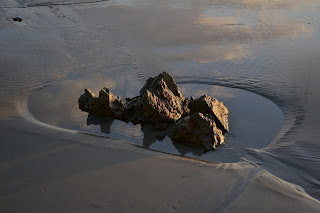COVID19 is like no other disruption we’ve seen in a lifetime. A gift from hell considering its dramatic and universal impact on human health. A gift from god considering the opportunities opened up as governments, communities and people have rapidly adapted.
Lockdown has provided unprecedented opportunity to reflect on what we do, and how we live, particularly in cities. It has focussed as much attention on what is essential as it has on how to live differently while still feeling satisfied and achieving most pre-pandemic goals.
We’re all getting a bit bored living in our bubbles, but the new urban silence, cycling and pedestrian safety, making do with less, cleaner and clearer air, no rush hour commutes and traffic jams, discovering neighbours and neighbourhoods, and the sheer power and utility of internet access to family, food, friends, information and work, has made people sit up and think. There’s a lot to like about the new urban paradigm that has been forced on us, despite the irritations.
What we are experiencing suggests new possibilities for cities.
What we have experienced in Auckland has roots in the “Competitive City” thinking of the last couple of decades. The minister’s introduction to The Ministry of Environment 2010 publication entitled: “Building Competitive Cities” begins:
An important component of the Government’s
economic agenda is ensuring New Zealand cities are
internationally competitive. This means cities that
enable their citizens to enjoy a great lifestyle and
affordable housing; cities that are efficient for business,
encourage investment and jobs; cities that are attractive
for visitors to support New Zealand’s increasingly
important tourism industry.
A key Government intervention toward this agenda was the
amalgamation of Auckland’s four city and three district councils to form the
supercity council, and the establishment of a cluster of independent Council
Controlled Organisations. Further interventions in process now include opening
up public infrastructure projects to private investment and reform of the
planning system.
From its inception Auckland Council has embraced and enabled
the Government’s economic agenda which has emphasised private property
development and international tourism. Auckland’s CBD increasingly looks and
feels like other international cities with their Dior, Prada and Gucci shops appealing
to rich tourists and high-rise office towers sporting international brand neon
signs appealing to investors. Much of this development and of the transport
infrastructure to service it – including cruise ship berthage – has been at the
expense of basic public and community infrastructure provision.
Standing in stark contrast, Wynyard Quarter’s internationally
famous waterfront development with its playgrounds, heritage wharf structures,
bridges, and wide-open public spaces came from a political agenda which emphasised
the creative, playful and reflective qualities and needs of the resident and
visitor population. It has also been a successful public economic investment.
Right now, Auckland CBD’s headlong plunge into the
competitive city abyss, is at a standstill. Workers and contractors are in
lockdown. They’ll be back as soon as the country’s lockdown rules allow it. But
this pause in construction does allow some reflection on what is happening
there, and whether the assumptions behind it still stand now that the world has
changed.
High street retail shopping has been coming under increasing
pressure and competition from online shopping for some time now. People I know,
and know of, buy furniture and even leather shoes online. My last two shirts
came from eBay Australia. Lockdown level 3 will almost certainly open up online
shopping to non-essential items. Every week of this lockdown indicates that shopping
is moving off the street and into cyberspace. Yet much of the Auckland CBD Commercial
Bay development which took away Queen Elizabeth Square is new retail.
International tourism is also at a standstill, and is likely
to remain so for several years if New Zealand succeeds in its COVID19
elimination strategy. Allocating high-end retail space in new CBD property
developments for high net-worth tourists cannot be justified economically.
Existing such provision will need to be re-purposed to generate enough revenues
to pay the ground rent.
The International Convention Centre is infrastructure to service
what amounts to international business tourism. Its utility must be questioned, just as the
future of high-end casinos is threatened by the absence of big-spending
international tourists.
And on the subject of tourism, New Zealanders are big
travellers. For the foreseeable future, many will now be looking to travel and
enjoy holidays in their own country. Auckland’s CBD is being changed and
developed now, but not to meet the needs of domestic tourists. Kiwis might like
a drink and a bite in downtown Auckland, which they can find, but there’s so
much else that could be done that would make the CBD more attractive to the
domestic population. Places to play (on land and in the water), places to learn
(Maori museum, Visitor museum, Maritime museum), places to create (music, street
theatre), and places to chill and watch the world go by.
But one of the biggest changes that Lockdown has stimulated
has been working from home. Already many companies are recognising that staff
want that to continue in some shape or form – whether it’s one or two days a week,
whether it’s week about, whatever – many working people have rediscovered their
local neighbourhoods, neighbours and communities and built worthwhile relationships
they’d like to retain. Working nine-to-five, five days a week, and all that
time spent commuting, doesn’t seem so attractive – or necessary – anymore.
Which means less CBD office space is needed, and less commuter traffic capacity
is needed.
It’s easy to make these obvious points, and there will be
many contracts and commitments that need to be delivered and completed. But this
moment cannot be allowed to pass without learning from what is happening, as it
provides a real-life glimpse into the future of cities in general, and an
opportunity to break with the old paradigm and its assumptions.























